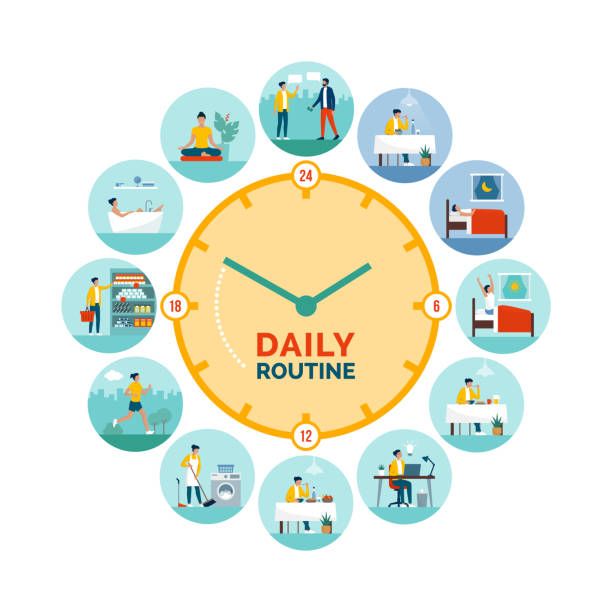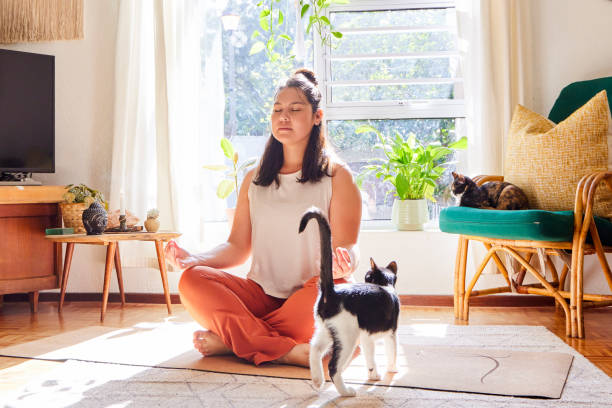Establishing a consistent exercise routine can be a game-changer for your physical and mental well-being, but getting started can feel daunting, especially if you’re new to fitness or working out at home. Fear not! This comprehensive guide will equip you with the knowledge and strategies to kickstart your home workout journey successfully, regardless of your fitness level.
Assessing Your Current Fitness Level
Before diving into a new exercise routine, it’s essential to understand your starting point. This will not only help you set realistic goals but also prevent potential injuries from overexertion. Consider conducting a simple self-assessment to evaluate your cardiovascular endurance, muscular strength, and flexibility.
For cardiovascular endurance, try a simple walking test. Time yourself as you walk for a mile or a set distance, and note your heart rate and any discomfort. This will give you a baseline for your aerobic capacity.
To assess muscular strength, try a push-up test or a squat test. See how many repetitions you can perform with proper form before reaching muscle failure. Don’t worry if the numbers are low – this is just a starting point.
Flexibility can be evaluated by performing basic stretches and noting your range of motion. Pay attention to areas that feel particularly tight or restricted.
If you have any pre-existing medical conditions or concerns, it’s always a good idea to consult with a healthcare professional before starting a new exercise routine.
Setting Realistic Goals and Creating a Plan

Now that you have a better understanding of your current fitness level, it’s time to set some goals. Effective goal-setting follows the SMART principle:
- Specific: “I want to exercise at home” is too vague. Instead, aim for something like “I want to do 30 minutes of cardio and strength training at home, three times a week.”
- Measurable: Quantify your goals so you can track your progress. For example, “I want to be able to do 20 push-ups with proper form.”
- Achievable: Start with goals that challenge you but are still realistic based on your current fitness level.
- Relevant: Ensure your goals align with your overall objectives, whether it’s weight loss, improved strength, or better endurance.
- Time-bound: Set a deadline for your goals to keep you motivated and accountable.
Once you’ve established your goals, create a plan that outlines the frequency, intensity, time, and type of exercise you’ll be doing. Remember, it’s crucial to start slowly and gradually increase the intensity and duration of your workouts to avoid burnout or injury.
Creating a Designated Workout Space
While having a dedicated home gym is ideal, it’s not a requirement for starting a successful exercise routine at home. Look for a quiet, clutter-free area where you can move freely without obstructions. Even a small corner of your living room or bedroom can work.
In terms of equipment, you don’t need much to get started. A yoga mat or exercise mat can provide a comfortable surface for floor exercises. Resistance bands are versatile and inexpensive tools that can be used for strength training. If you want to incorporate weights, consider investing in a set of adjustable dumbbells or using household items like canned goods or water bottles.
Warm-up and Cool-down Routines
Proper warm-up and cool-down routines are essential for injury prevention and should be incorporated into every workout session.

A warm-up should gradually increase your heart rate and body temperature, preparing your muscles for more intense activity. Start with some light cardio, such as marching in place or jumping jacks, for 5-10 minutes. Follow this with dynamic stretches that mimic the movements you’ll be doing during your workout.
After your main workout, it’s crucial to cool down with static stretches and light mobility exercises. This helps your body recover and reduces the risk of soreness or injury.
Cardio Exercises for Home Workouts
Cardiovascular exercise is vital for overall heart health, weight management, and endurance. The good news is that you can get an effective cardio workout at home without any specialized equipment.
Low-Impact Options:
- Walking in place
- Marching with high knees
- Low-impact aerobics (e.g., stepping side to side, knee lifts)
High-Intensity Interval Training (HIIT):
HIIT alternates periods of intense effort with periods of rest or lower-intensity exercise. This type of workout is highly effective for burning calories and improving cardiovascular fitness. Here’s an example of a simple HIIT routine:
- Warm-up for 5 minutes
- 30 seconds of high-intensity exercise (e.g., jumping jacks, high knees, burpees)
- 30 seconds of rest or low-intensity exercise (e.g., marching in place)
- Repeat steps 2 and 3 for a total of 10-20 minutes
- Cool down for 5 minutes
Remember to modify the intensity and duration based on your fitness level.
Strength Training at Home
Strength training is essential for building and maintaining muscle mass, improving bone density, and boosting metabolism. While a well-equipped gym may seem ideal, you can get an effective strength workout at home with minimal equipment.

Bodyweight Exercises:
- Push-ups (modify by doing them on your knees or against a wall)
- Squats
- Lunges
- Planks
- Crunches or sit-ups
Resistance Band Workouts:
Resistance bands are versatile and can be used for a wide range of exercises, targeting different muscle groups. Here are a few examples:
- Bicep curls
- Tricep extensions
- Lateral raises for shoulders
- Glute bridges for lower body
Household Items as Weights:
Don’t have dumbbells? Get creative with household items like water bottles, canned goods, or even a backpack filled with books.
Flexibility and Balance Exercises
While often overlooked, flexibility and balance exercises are crucial components of a well-rounded fitness routine. They can improve overall mobility, reduce the risk of injury, and enhance your performance in other types of exercise.
Yoga and Pilates:
These mind-body practices not only improve flexibility and balance but also promote relaxation and stress relief. Look for beginner-friendly yoga or Pilates routines on YouTube or fitness apps.
Stretching Exercises:
Dedicate time to stretching major muscle groups, such as your hamstrings, quadriceps, calves, and hip flexors. Static stretches, where you hold a stretch for 20-30 seconds, are effective for improving flexibility.
Staying Motivated and Overcoming Challenges

Starting a new exercise routine can be challenging, and motivation can wane over time. To stay on track, try implementing these strategies:
- Set up a reward system: Treat yourself to something you enjoy (within reason) after achieving specific goals or milestones.
- Find an accountability partner: Exercise with a friend, family member, or join an online community to stay motivated and accountable.
- Deal with setbacks and plateaus: Remember that progress is not linear. Celebrate small victories, and don’t be discouraged by temporary setbacks or plateaus.
Nutrition and Hydration for Home Workouts
Proper nutrition and hydration are essential for fueling your body and supporting your exercise routine.
Nutrition:
- Aim for a balanced diet rich in whole foods, including fruits, vegetables, lean proteins, and complex carbohydrates.
- Consider having a small snack with a combination of protein and carbohydrates before your workout to provide energy.
- After your workout, replenish your body with a post-workout snack or meal that includes protein for muscle recovery and carbohydrates to replenish glycogen stores.
Hydration:
- Drink water before, during, and after your workout to stay hydrated.
- Opt for water or unsweetened beverages over sugary sports drinks.
Tracking Progress and Modifying Your Routine
As you progress in your home exercise journey, it’s important to monitor your progress and make adjustments to your routine as needed.
Tracking Progress:
- Use fitness tests (e.g., push-ups, sit-ups, timed mile) to measure improvements in strength, endurance, and cardiovascular fitness.
- Take progress photos or measurements to track changes in your body composition.
- Keep a workout journal to record your exercises, weights, reps, and overall performance.
Modifying Your Routine:
- Increase the intensity or duration of your workouts as you become stronger and more conditioned.
- Add new exercises or variations to challenge your muscles in different ways.
- Adjust your goals and set new ones as you achieve your initial targets.
Remember to celebrate your milestones and progress, no matter how small they may seem. Consistency and perseverance are the key.
If you have any doubts or queries, feel free to write to us. It would be a great pleasure to help you out.
